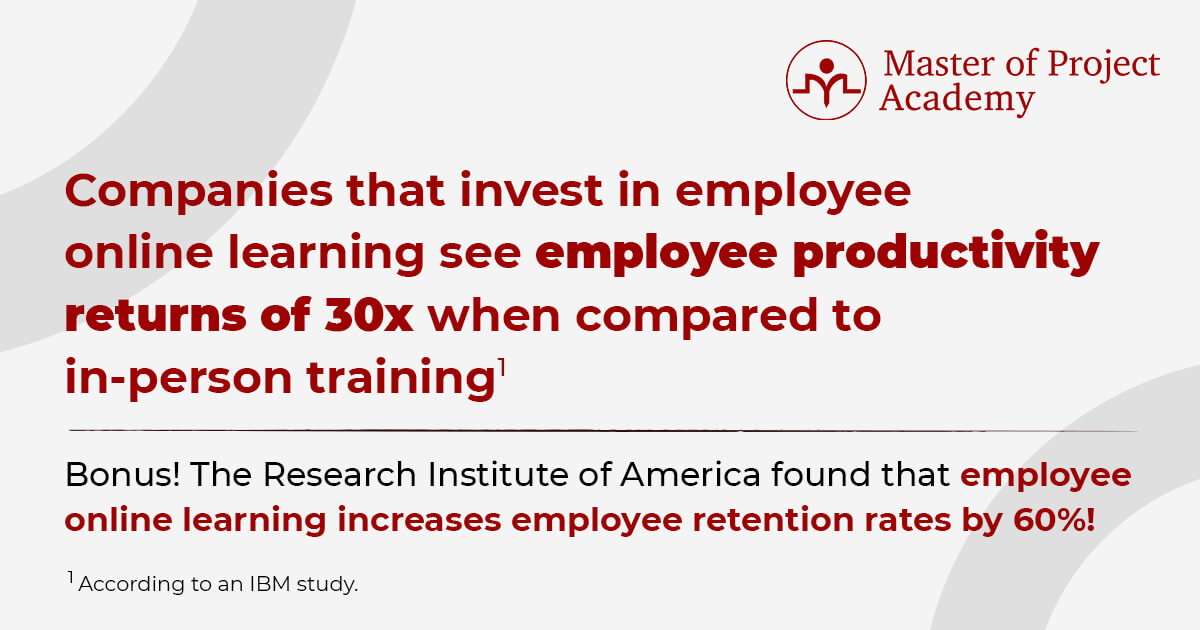Master of Project Academy’s 8-part series Horrible, No Good Bosses – The True Cost of Poor Leadership was created to address the most common ways poor leadership results in flat/declining revenues and increased expenses. In this series, we will explore the topics of Communication, Networking, Emotional Intelligence, Leadership, Discipline, Teamwork, Adaptability, Conflict Resolution, Empathy, Positivity, Decisiveness, and Persuasion.
In the previous 5 of our 8-Part Series Horrible, No Good Bosses – The True Cost of Poor Leadership, we have discussed autonomy, purpose, growth, connection, engagement, and many other elements of effective leadership, next we will examine employee strengths.
- Check out the very first article of our Horrible Bosses Blog, No Good Bosses Blog series.
Marcus and Kendra’s Story
Marcus and Kendra just left the office to grab lunch. They do this once or twice a month to vent their frustrations over their workloads. As they walk toward the food trucks that gather outside of their office each Friday, Marcus says, “I just don’t know how much longer I can spend 40 hours a week doing work I hate!” Kendra sighs and responds, “I applied for four positions last night after my meeting with John yesterday. He assigned me three new projects that are going to be soul-crushing.”
Marcus asks Kendra which projects she was assigned and after hearing her answer, responds with, “Why wouldn’t he have assigned those to me? He knows that’s the work I enjoy and I am skilled at. Instead, he assigned me two projects I hate that Catherine would have loved to work on. I’ve asked him over and over to assign me different work and his response is always that my position can only take on this type of project.”
John is missing out on opportunities to bring a lot of value to his team and to his organization. In our scenario, Marcus, Kendra, and Catherine have all been assigned work that they don’t want to do, and that someone else would love to do. John’s inflexibility is costing his company time and money, not to mention quality.

Benefits of ensuring the assignments to your employees’ strengths
In a Gallup Survey, they concluded that 67% of employees who believe that their work is designed to suit their strengths are engaged. Employers who work to ensure the assignments are well matched to their employees’ strengths see measurable, results that cannot be ignored.
- 10% to 19% increased sales
- 14% to 29% increased profit
- 3% to 7% higher customer engagement
- 6% to 16% lower turnover (low-turnover organizations)
- 26% to 72% lower turnover (high-turnover organizations)
- 9% to 15% increase in employee engagement
- 22% to 59% fewer safety incidents ¹
How to match workloads to your employees’ strengths?
Matching workloads to employee strengths can result in 10s to 100s of thousands of dollars (or more!) of savings and profit to organizations. So, how do we do this? All of us work in organizations that have some sort of construct for how our structures are organized and how workloads get assigned. For most of us, walking in to work tomorrow and suggesting we totally revamp everything we do is not necessarily feasible. Because of this and a few other reasons, the best approach to bring some of these remarkable benefits to your teams is via baby steps. Instead of reworking everything within your team, let’s start small.
Step 1. Choose your evaluation method
There are a lot of options to identify the strengths of your employees. Your team can do self and peer evaluations or you can use formal measurements such as the Clifton Strengths Finder ² or the Echospan 360 Assessment ³. You need to decide which tool(s) you will use, based on your and your organization’s objectives.
Step 2. Identify strengths
Now it’s time to implement the chosen tools. Have the teams complete their evaluations and then take time to review the results, as a team. In this step, pay attention to the individual responses to the results. Do the team members agree with their results? Do they get excited when they discuss their strengths?

Step 3. Assign work
This is where the rubber meets the road. When new assignments come into your team, consider the type of work that will be required to meet the objectives. Then review the results of your assessments and assign the work to the person most well matched to that assignment. When you have your conversations with the team member to discuss the new assignment, explain how you came to the decision. Or, better yet, work with the team to assess the work and decide for themselves where it should ultimately be assigned.
Step 4. Encourage strengths conversations
You will want to make the strengths-based approach part of your team culture. When you are in a team meeting and one member mentions an issue they are having, ask “based on what you know of your team’s strengths, who on the team would be able to help you with this?” Reflect on other ways you can bring this approach into your daily conversations to help your team grow accustomed to this new way of framing the work.
Step 5. Provide opportunities to grow
Lastly, address weaknesses. For some of your team members, there may be critical aspects of their job that they cannot hand off to others, yet are not their strong suits. In these instances, you need to offer opportunities for them to develop these skills. In other cases, team members may want to develop skills that do not rise to the top of their strengths lists. Allow them opportunities to learn and grow in these areas.
- Our PM Core™ – Project Management Training for Business helps organizations develop their teammates into practitioners who can deliver measurable returns

Conclusion
By taking a more measured approach and not coming in and rearranging everyone’s workloads immediately, you are effectively managing change within your groups. This slow introduction to this operational and cultural change will help to minimize resistance and not overwhelm your teams.
This type of change will require some patience and some time, but the dividends it will pay are tremendous.
In our next, Horrible, No Good Bosses Blog, we will discuss what happens when leaders ignore poor performance within their teams.
For more information on providing your leaders with Master of Project Academy’s Leadership Program, where your leaders will get instructive and hands-on training through interactive exercises, case studies, templates, and techniques that can be customized to your organization’s specific needs, click HERE.

 Written by: Sandra Worley
Written by: Sandra Worley